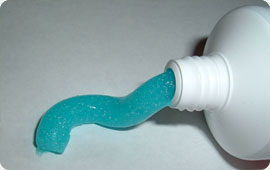 Few poisons are as firmly established in our daily life as fluoride. During the past 50 years there has been a global campaign relating fluoride to dental health. The municipal water supplies as well as many products, such as toothpaste, bottled water and chewing gum, have been fluoridated due to its alleged anti-cavity effect .
Few poisons are as firmly established in our daily life as fluoride. During the past 50 years there has been a global campaign relating fluoride to dental health. The municipal water supplies as well as many products, such as toothpaste, bottled water and chewing gum, have been fluoridated due to its alleged anti-cavity effect .
However, over the past few decades, numerous scientific studies have shown the danger of this highly toxic, man-made compound. An increasing number of health authorities now advise people to avoid fluoridated products.
In some countries, such as Switzerland, they stopped putting fluoride into the municipal water supplies decades ago and in Belgium products (such as chewing gum, tablets and mouth washes or rinses) that were “enriched” with fluoride were taken off the shelves as there was no unanimous opinion as to a safe, minimum dose to avoid devastating health effects.
Nowadays, even the FDA (the U.S. Food and Drug Administration) requires that all fluoride toothpastes sold in the United States carry the following warning: “Keep out of reach of children under 6 years of age. If you accidentally swallow more than needed for brushing, seek professional assistance or contact a poison control centre immediately”.
Fact is that the excessive use of fluoride is highly toxic and can cause the opposite effect to the one allegedly sought: it actually weakens the enamel (causing more cavities), can discolour or stain your teeth permanently and also weakens your bones (more decalcification and osteoporosis). But the risk is even greater: Excessive use of fluoride is irreversible and can affect the brain by weakening mental capabilities and working in the brain like a permanent sedative.
The first symptoms of fluoride poisoning include gastrointestinal distress, nausea, vomiting and headaches. The minimum dose that can cause these symptoms is estimated at 0.1 to 0.3 mg /kg of fluoride (for example 0.1 to 0.3 milligrams of fluoride per kilogram of body weight). A child that weighs 10kg can therefore suffer from severe fluoride poisoning when ingesting 1 to 3 milligrams at one time.
This amount of fluoride can be found in doses from 1 to 3 grams of toothpaste (less than 3% of the tube content) including toothpaste with fruit flavours that are marketed as particularly child-friendly. This is especially alarming as we know that children swallow a large part of the toothpaste they use.
The United States began using fluoride in 1945 with the simple argument that there “was a statistical connection between the fluoridation of the water and a lower incidence of tooth decay”. Further studies, however, would note that its consumption caused serious risks to public health and its effects were considered irreversible as fluoride is an accumulative poison. Despite this risk, there is still a lot of misinformation and the public is not well enough informed about this fact.
How do we ingest fluoride without knowing it?
- Tablets or chewing gum with fluoride
- Some bottled waters carry an extra dose of fluoride or contain naturally high amounts of fluoride (these are usually highly mineralized waters and there is a warning that they should not be ingested by infants or pregnant women)
- Toothpaste and mouth washes or rinses contain high amounts of fluoride
- Certain processed and dehydrated foods
- Certain grains, alcohol-free beverages, salt, tea, wine and baby formula
- Lots of fluoride is released by the aluminium-processing industry, causing environmental pollution
- Frying pans and other Teflon utensils, when scratched, can release fluoride

